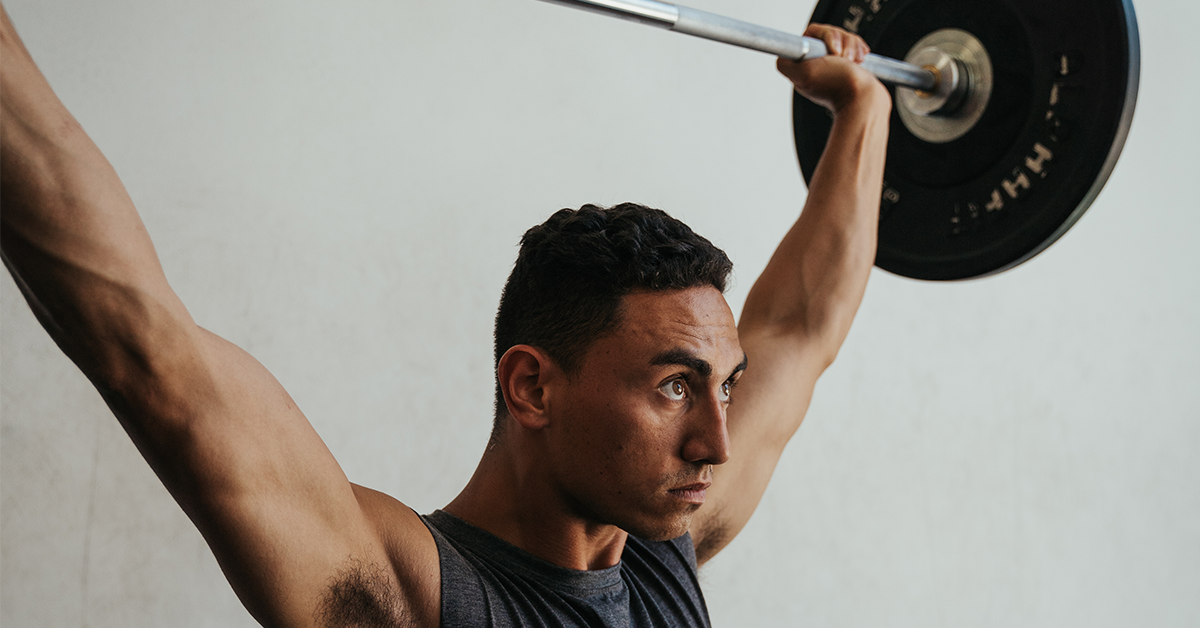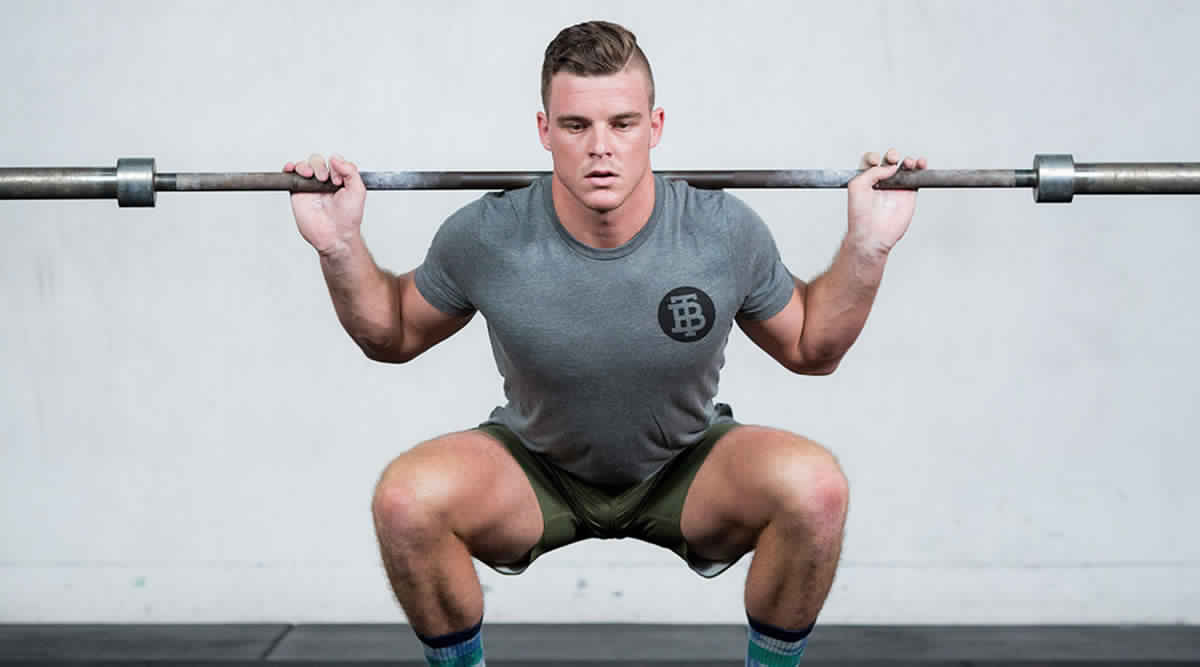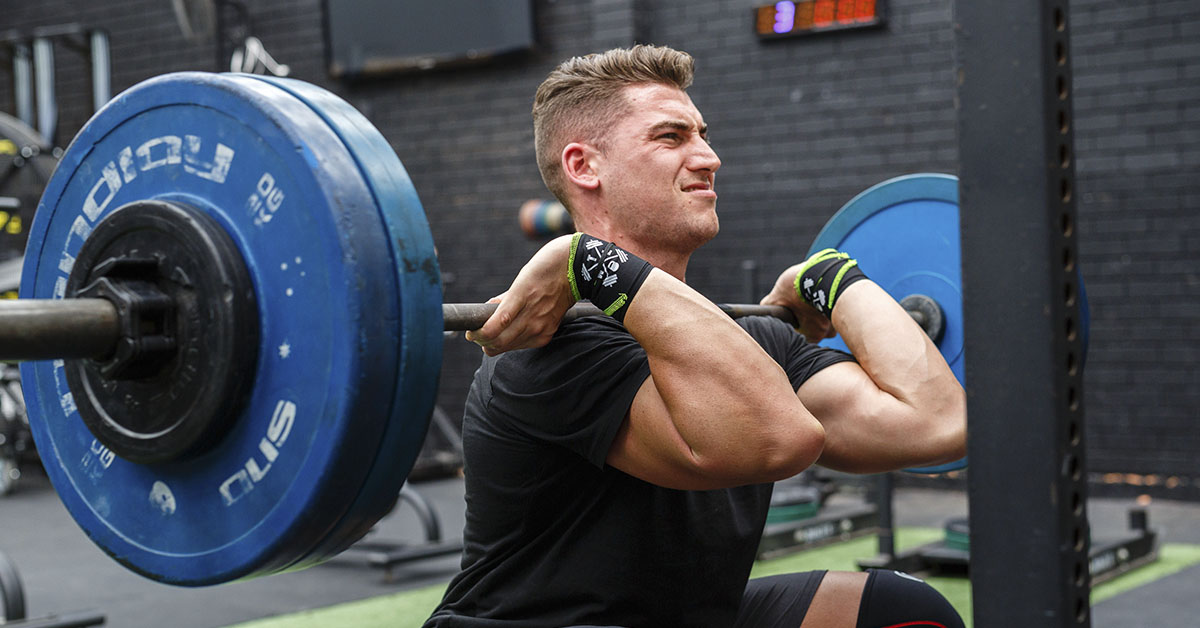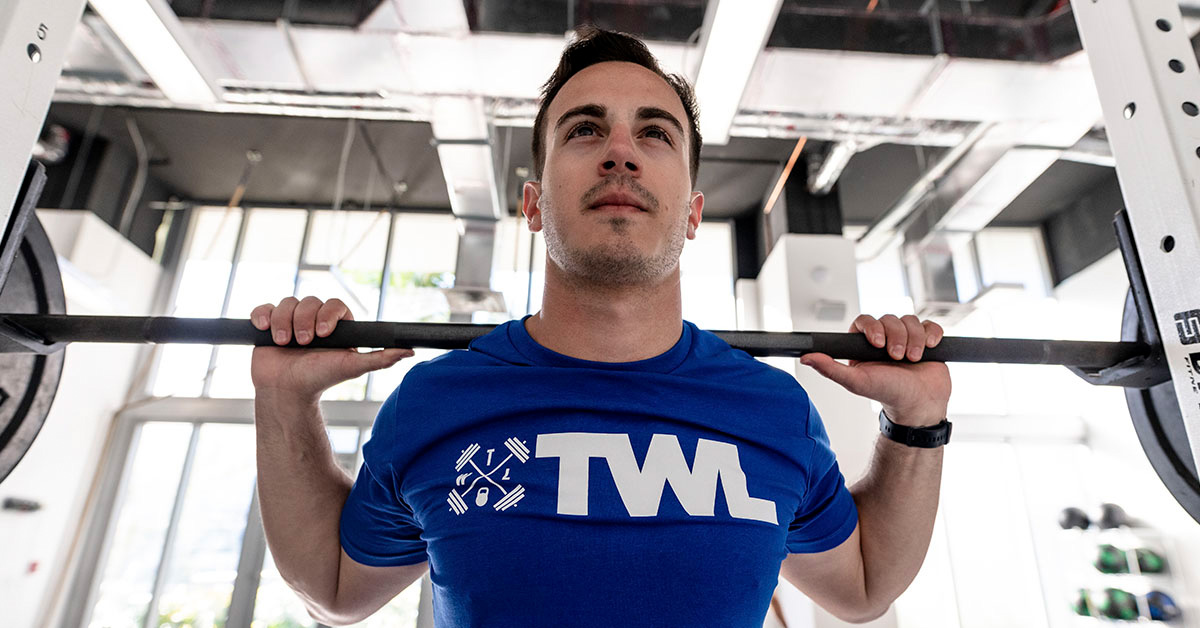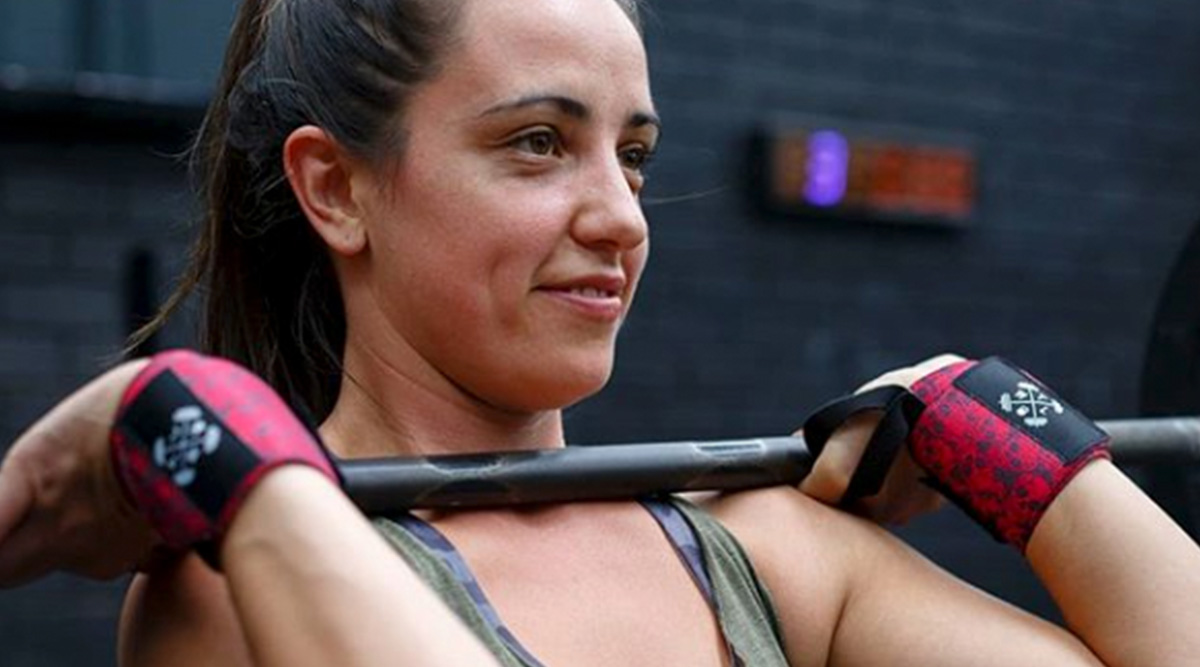Overhead squats might be the trickiest of the bunch. They require not just strength but serious mobility. Let’s talk about the proper overhead squat form so that you can perform the movement safely and effectively, adding more weight and more reps to your programming.
5 Tips for Better Overhead Squat Form
1. Use Your Snatch Grip
A lot of athletes wonder exactly where to grab the bar. It should look like your snatch grip!
Here’s another way to look at it: If you pick up the barbell and hold it in front of you, you want to it be resting right around where your hips crease. If it’s lower than this, trying widening your grip, which will bring the bar up higher. If it’s higher than this, narrow your grip.
When you bring the bar into the overhead position, you’re going to find that this feels a lot more natural and intuitive for your shoulders. If this feels a little stressful on your wrists, you might find that wrist wraps help. Shop our collection.
Psst! Be sure to check out our blog on shoulder mobility tips.
2. Position the Bar Just Slightly Behind Your Head
There are times when you want your body to be perfectly aligned and stacked. For instance, in your standard overhead press, the cue is often to keep your biceps by your ears. This ensures that the barbell is straight overhead.
However, overhead squat form is slightly different. You’ll likely find that securing the barbell just slightly behind your head puts you in a more neutral position. Part of this is because it helps to counterbalance your knees being in front of you.
If you attempt to have the bar difficult over your head, you might notice that it feels wobbly — like you’re about to tip forward. Move the weight back ever so slightly.
Shop Now
3. Point Your Elbows Out
There are many opinions about which way your armpits and elbows should face in the overhead squat form. Many coaches will tell you to turn your armpits forward – which goes hand in hand with having the barbell straight overhead.
However, as you now know, this might not feel like the most secure overhead squat form. Try pointing your elbows to the side, which will also lead your armpits to turn outward a bit. This also helps to keep the rotator cuff active and the shoulder stable.
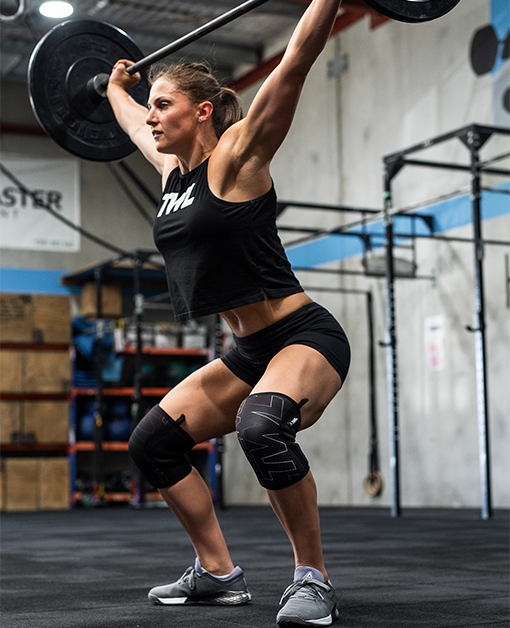
4. Only Squat as Low as You Can Maintain Your Position
The overhead squat is no different from anything else: You should never sacrifice form and technique for the sake of weight and reps.
If your hips start to tuck under at the bottom of the squat, your knees start to cave in, or your head/chest dip forward, hit the pause button. With your whole body being taxed during this squat, the last thing you want to do is put your knees, hips, shoulders, or back in a compromising position.
If your squat mobility is struggling, start by squatting down to a bench or ball.
Read our blog on more tips to improve your squat mobility.
5. Start With PVC But Add Weight Early On
Practicing with PVC is always a smart idea, but it also doesn’t fully allow you to practice your overhead squat form. This is because it actually helps to have at least a little weight pushing down on you, so that you can rehearse the correct positioning and bar placement.
Start with PVC, especially to warm up your shoulders. Once you’ve knocked out a few reps, consider adding tens to your barbell to continue warming up.

